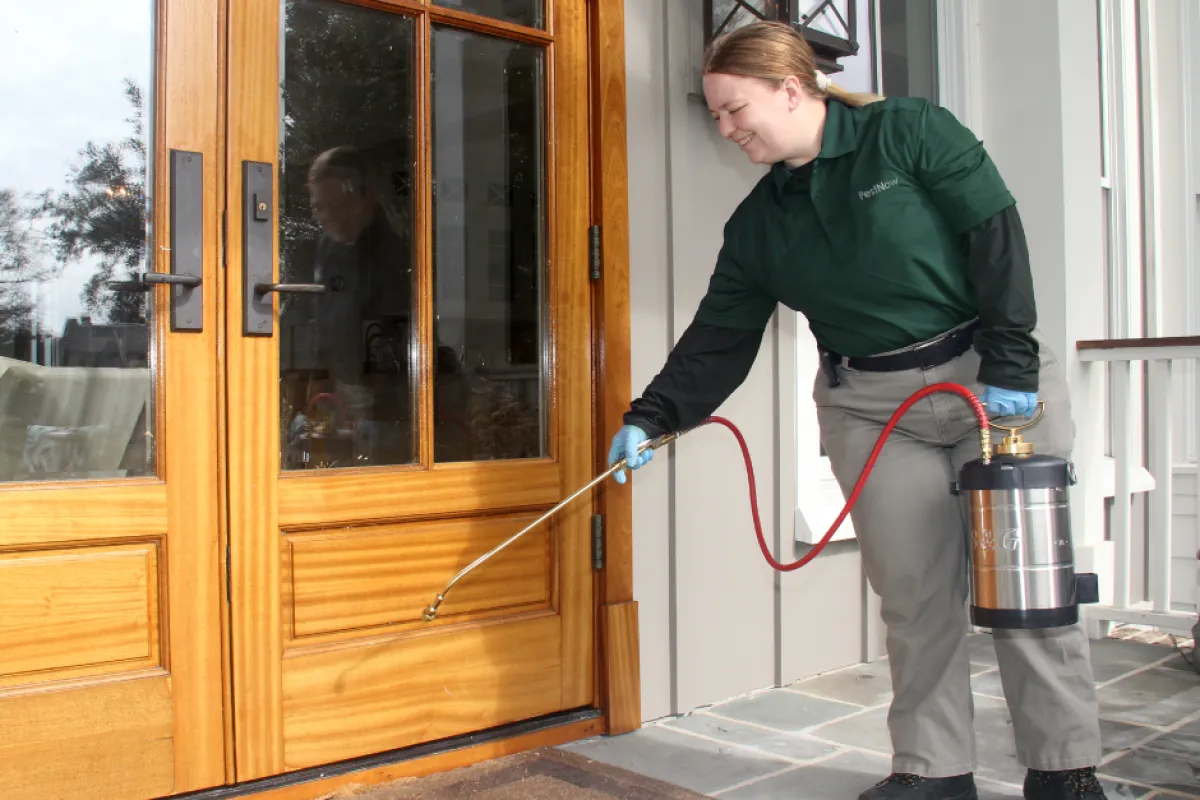Efficient A1 Bed Bug Treatment in Charlotte - Safe and Proven Techniques
Efficient A1 Bed Bug Treatment in Charlotte - Safe and Proven Techniques
Blog Article
Bed Bug Treatment Failure: Comparing Chemical Vs. Non-Chemical Solutions
In the world of bug control, specifically when dealing with the persistent concern of bed pests, the choice between chemical and non-chemical treatment options can be a pivotal one. Both strategies use distinctive advantages and downsides, influencing aspects such as efficiency, safety factors to consider, and overall expense. By taking a look at the nuanced details of each method, a clearer understanding of which course to seek in addressing a bed bug infestation can be attained.
Efficiency of Chemical Therapies
Chemical treatments for bed bug infestations have been extensively acknowledged for their fast and powerful efficacy in removing these insects. When thinking about the performance of chemical treatments, it is vital to recognize that they can give a complete and fast service to a bed insect issue.
Furthermore, chemical therapies have the benefit of supplying residual results, implying that they can remain to remove bed bugs even after the first application. This recurring activity is specifically beneficial in combating any type of prospective re-infestations. In addition, the quick action of chemical treatments can bring relief to individuals encountering serious bed insect invasions, enabling them to gain back control of their space promptly.
Safety Interest In Chemical Solutions
One vital aspect that needs mindful consideration when using chemical options for bed bug therapy is ensuring the safety of owners and the environment. Direct exposure to specific chemicals used in bed insect treatments can lead to respiratory issues, skin inflammation, or various other unfavorable reactions, specifically in people with pre-existing problems or sensitivities.
Additionally, the environmental impact of chemical services is another substantial factor to consider. Some pesticides utilized in bed insect therapies may be dangerous to useful insects, wild animals, and communities if they seep right into the soil or water supply. It is important to make use of chemical treatments sensibly, following security guidelines, and considering much less toxic alternatives to minimize these dangers and make sure the effective and risk-free administration of bed bug problems.
Advantages of Non-Chemical Techniques
Taking into consideration the prospective safety problems and environmental effect connected with chemical remedies for bed insect treatment, discovering non-chemical techniques offers an appealing option with several unique benefits. Non-chemical approaches provide a more secure choice for houses, specifically those with animals, people, or children conscious harsh chemicals. These strategies remove the threats of exposure to harmful compounds, decreasing the capacity for negative health and wellness effects. Furthermore, non-chemical therapies are eco pleasant, as they do not contribute to air or water pollution, making them a lasting selection for pest control.
Furthermore, non-chemical options can be efficient in targeting bed bugs, including hard-to-reach locations where chemical therapies might not pass through. Methods such as warm treatment, vacuuming, steam cleaning, and mattress encasements provide extensive removal without the use of dangerous chemicals. Furthermore, non-chemical techniques can be less turbulent, needing marginal prep biological pest control work and permitting for quicker reentry into dealt with areas. On the whole, going with non-chemical bed insect treatment approaches not only focuses on safety and ecological protection but likewise guarantees extensive and reliable pest control.
Limitations of Non-Chemical Treatments

Additionally, non-chemical treatments usually need several applications to achieve effective removal. This can be lengthy and might not constantly guarantee full removal of all bed insects and their eggs, specifically in hard-to-reach or covert places.
Moreover, the success of non-chemical treatments heavily counts on correct implementation and thoroughness, which can be challenging for people without specialist know-how. Poor application of non-chemical approaches might cause incomplete elimination, leading to relentless problems and the need for extra treatments.
Therefore, while non-chemical treatments have their advantages, it is necessary to acknowledge these restrictions and consider them when identifying one of the most efficient technique for managing bed pest infestations.
Price Contrast: Chemical Vs. Non-Chemical Options
Provided the restrictions connected with non-chemical therapies, an essential element to review in the context of bed pest monitoring is the expense contrast between chemical and non-chemical options. Chemical therapies normally entail the application of insecticides by professionals, which can range from $250 to $900 per area, depending on the intensity of the infestation and the size of the area to be treated. In comparison, non-chemical therapies like heat treatment or vapor can be much more pricey, squirrel control with expenses varying from $1,000 to $6,000 for a whole home. While the first expense of chemical therapies may seem lower, numerous treatments might be needed to completely remove the infestation, possibly boosting the overall expense. On the other hand, non-chemical choices may offer a much more green and lasting service, although they can be cost-prohibitive for some people. Inevitably, when considering the expense of bed bug therapy choices, it is very important to weigh the upfront expenditures against the performance and long-lasting sustainability of the selected approach.
Verdict

Thinking about the possible safety and security concerns and ecological effect linked with chemical options for bed insect treatment, exploring non-chemical strategies presents an appealing option with numerous unique advantages.Given the restrictions linked with non-chemical treatments, an important aspect to evaluate in the context of bed insect management is the expense contrast in between chemical and non-chemical alternatives. In have a peek here comparison, non-chemical treatments like warmth treatment or steam can be much more costly, with expenses ranging from $1,000 to $6,000 for an entire home. While the preliminary price of chemical therapies may appear reduced, multiple treatments might be called for to totally get rid of the problem, possibly boosting the total price.In verdict, when contrasting chemical and non-chemical bed insect treatment options, it is vital to take into consideration performance, safety, advantages, restrictions, and price.
Report this page